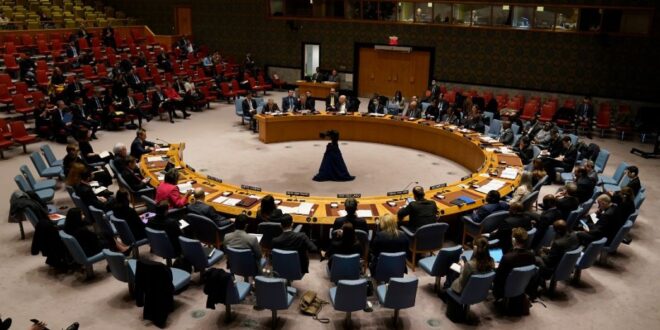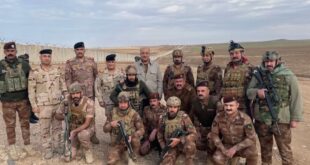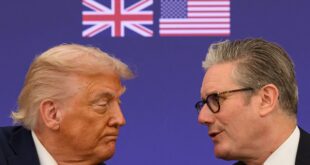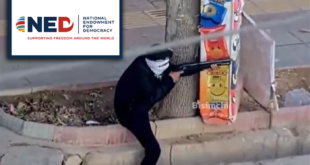The United Nations has multiplied initiatives since the beginning of the war in Ukraine. But as long as the right of veto remains, its room for maneuver will remain very narrow.
On February 24, 2022, Russia invaded Ukraine . Nearly a year later, the results are dramatic . And there is no indication that the conflict will end anytime soon, with both sides posting demands that seem irreconcilable . While on the ground, Russian determination comes up against fierce Ukrainian resistance supported by many Western states.
In this deadly context, can the United Nations (UN) act in such a way as to restore peace? What is certain is that if she has failed for a year, she does not relax her efforts…
Peace, the raison d’être of the United Nations
Remember that peace is the primary goal of the United Nations, created in 1945, in the aftermath of the bloodiest war in the history of mankind . Its Charter affirms from the first sentence of its preamble that the purpose of the UN is to “save succeeding generations from the scourge of war” .
The UN General Assembly, where each of the member states ( now numbering 193 ) has one vote, has passed several resolutions over the past year aimed at stopping the war and condemning Russia for its invasion of Ukraine. These resolutions are not binding, unlike those passed by the Security Council . These must be adopted by at least nine votes, out of the fifteen members (the five permanent members and ten members elected by the General Assembly for a two-year term according to a principle of rotation).
However, the Security Council is paralyzed because Russia systematically vetoes any Council resolution condemning it, as it did on February 25, 2022 (on the resolution aimed at “condemning Russian aggression” ) and on February 30, 2022. September 2022 (on the one condemning the annexation of four Ukrainian regions).
A multitude of actions for a year
Despite the blocking of the Security Council by Moscow, the General Assembly was able to make itself heard on numerous occasions. On March 2, 2022, it adopted a resolution demanding the withdrawal of Russian troops . On April 7, another resolution suspends Russia from the Human Rights Council – a UN body which has forty-seven member states divided by geographical area, elected by secret ballot and by absolute majority by the General Assembly for three years.
In May, the Human Rights Council votes on a resolution calling for the opening of an investigation into the atrocities alleged against the Russian occupation troops . In July, the UN contributes to the adoption of an agreement to allow the resumption of Ukrainian grain exports . In November, the General Assembly adopts a resolution calling on Russia to pay war reparations to Ukraine . But this resolution remained a dead letter, Russia not responding to it.
Which is not to say that the UN is not doing anything concrete for Ukraine. With its programs and specialized agencies such as Unesco , the World Health Organization (WHO) , the Food and Agriculture Organization (FAO) , UNICEF or the World Food Program (WFP) , over the past year, it has helped more than 14 million Ukrainians on a humanitarian level. More than 1,400 UN personnel are present in Ukraine , bringing food, shelter, blankets, medicine and water to destitute residents.
The humanitarian situation is indeed very serious: the High Commissioner for Refugees (UNHCR) has measured that more than 17 million people have fled the country . This is the fastest forced population movement since World War II .
Always more tools to work for peace
The UN has many tools at its disposal , both in terms of peacekeeping (“peacekeeping”, i.e. the interposition of blue helmets in armed conflicts) and peacebuilding ( “consolidation of peace” that is to say post-conflict actions, for example the organization of free elections). It has had a Department of Peacekeeping Operations (OMP) since 1948.
Since that date, UN officials have developed numerous ideas to make this action more effective. With the “Agenda for Peace” report by Secretary General Boutros Boutros-Ghali in 1992 , the UN was able to deploy its blue helmet units more quickly (civilian, military and police working together) , to preventive diplomacy (trying to prevent violence from erupting) and post-conflict peacebuilding (building a lasting peace over the long term, by addressing economic, social, cultural and humanitarian problems) .
With the “Brahimi report” in 2000 , the idea emerged of being able to deploy blue helmets even more quickly, in thirty days, and the whole of a mission in ninety days . It is also a question of developing a multidimensional approach including both peacekeeping and peacebuilding , which had already been called for by the “Agenda for Peace” report, but not really achieved in practice.
In 2008, the UN launched the “Capstone Doctrine” , from which it emerges that the UN must focus on pre-conflict (conflict prevention) and especially on post-conflict (restoring peace and democracy) .
In 2015, the HIPPO (High-Level Independent Panel on Peace Operations) report recommended PKOs better adapted to the complexities of the field and the needs of the populations. PKOs now contribute, for example, to the reintegration of former combatants and the organization of democratic elections: more than a hundred countries have requested and obtained electoral assistance from the UN since 1991 .
Finally, in 2018, Secretary-General António Guterres launched the Action for Peacekeeping (A4P) initiative and its A4P+ implementation strategy around these broad key themes: promoting political solutions to conflicts; the protection of civilians; the protection of blue helmets; improving the performance of peacekeeping operations ; sustaining peace; strengthening regional partnerships and improving the conduct of operations.
An intervention of the peacekeepers?
Concretely, in Ukraine, could the Blue Helmets make Russia bend? Beyond the question of the political feasibility of such an operation, this would require a colossal deployment of men and equipment. Is it even conceivable that the blue helmets – whose numbers come from ninety-seven different countries, in the first ranks of which are Pakistan, India, Ghana, Bangladesh and Ethiopia , which raises a problem of dilution of responsibilities – being deployed in such large numbers, with such a quantity and quality of sophisticated armaments ?
In history, only the UN Operation in the Congo (ONUC), from 1960 to 1964, mobilized a very large number of blue helmets: at its peak, ONUC had 93,000 men and officers, drawn from thirty – four countries . And despite this, this operation was not a success…
It should also be remembered that, although they are absent in Ukraine, the Blue Helmets, whose action was hailed by the Nobel Peace Prize in 1988 , are active on the ground almost everywhere in the world. They have, since their creation in 1948, worked in seventy-two peacekeeping operations in many countries. Their number is increasing: while they were 12,000 in 1996, they are more than 75,000 today . Currently, they are present in twelve peacekeeping operations , including six in Africa and four in the Middle East.
If, today, in Ukraine , a force of Blue Helmets were sent as an interposition force, their presence could perhaps help to deter Russia from carrying out attacks that were too destructive, but this is not certain.
The fact remains that such a presence can be useful. But for that, the Security Council would have to vote unanimously in favor of such a shipment, which is unthinkable, Russia being opposed to it.
The right of veto, a permanent blockage?
For the United Nations to act more effectively to promote peace, it is urgent to suspend, or even abolish, the right of veto which paralyzes it.
We have said it: five States, considered to be the victors of the Second World War – France, the United States, Russia, the United Kingdom and China – hold this privilege, which seems more and more anachronistic and unjustified today. It only paralyzes the UN, and has prevented it, for example, from taking concrete action in Syria since 2011 .
France , which has not used its veto for more than twenty-five years, proposed, in 2014, a framework, even a suspension of this right, when the UN deals with situations where mass violence is in progress . . This initiative was supported by more than 106 countries .
How can the right of veto be abolished, knowing that Russia, which has it, can use it to oppose such a reform? A step forward was taken in April 2022, when the General Assembly adopted a resolution asking the five permanent members of the Security Council to justify their use of the veto . This at least makes it possible to regulate this right, to make it more difficult to exercise.
The General Assembly will now convene a meeting within ten working days of the exercise of the right of veto by one or more permanent members of the Security Council, in order to hold a debate on the situation on which the veto has been exercised. All UN members will be able to review and comment on the veto.
Today, almost a year after the start of the Russian attack in Ukraine, it is clear that the United Nations needs to be revitalized, in order to be able to play its essential peacemaking role effectively. This debate has been going on for a long time . Will the Ukrainian tragedy allow it to progress?The Conversation
 Eurasia Press & News
Eurasia Press & News



